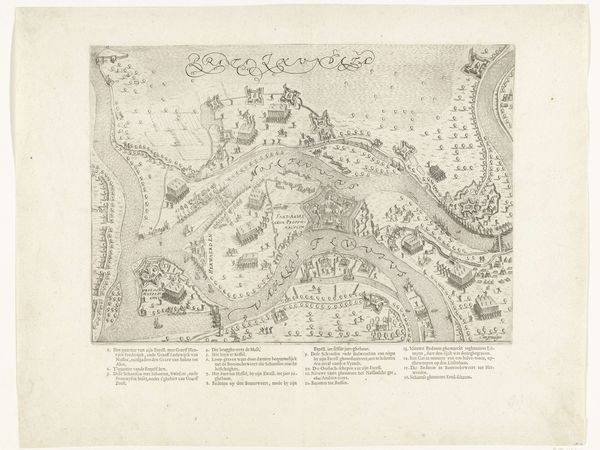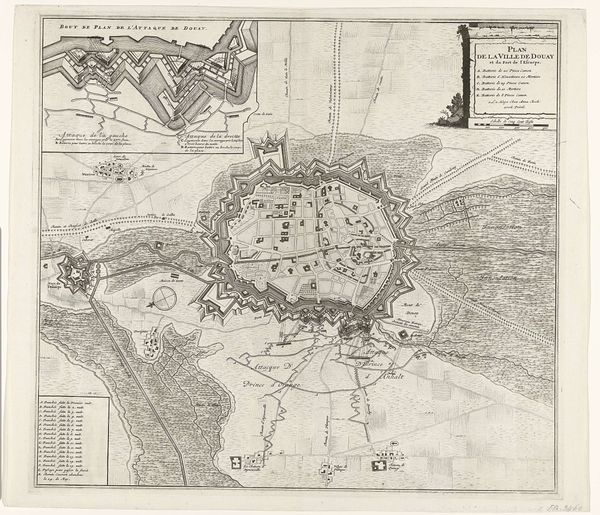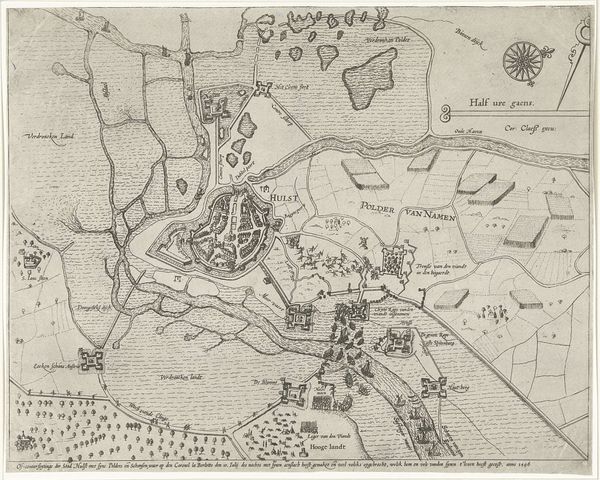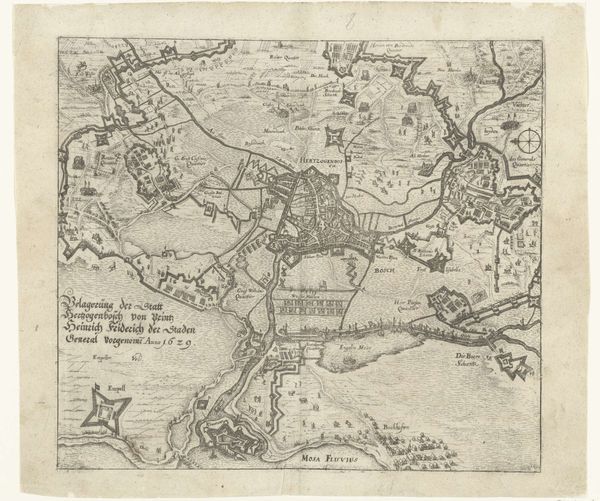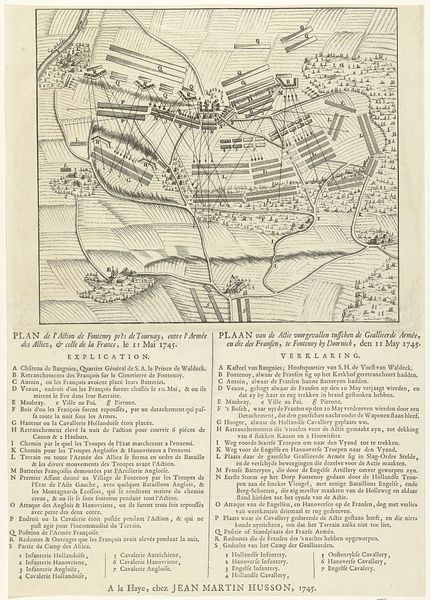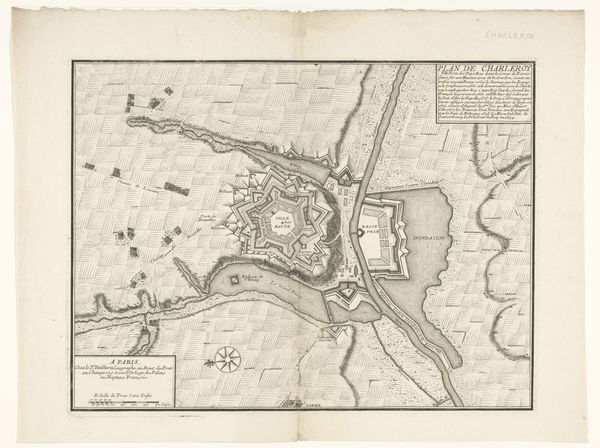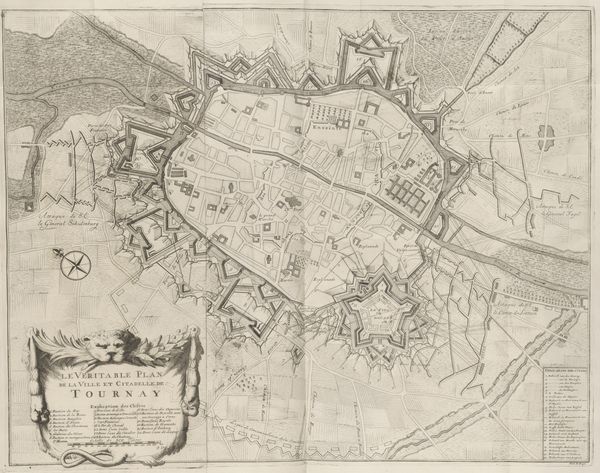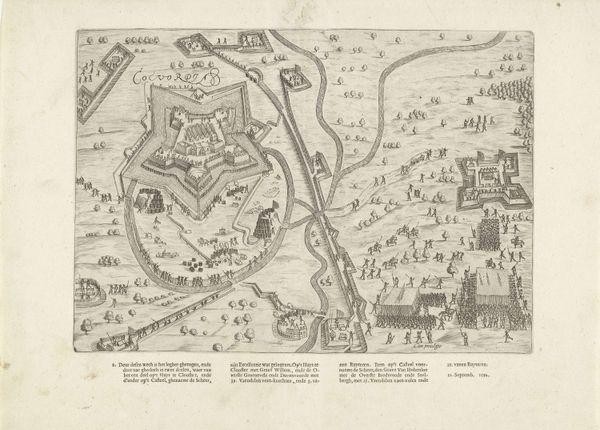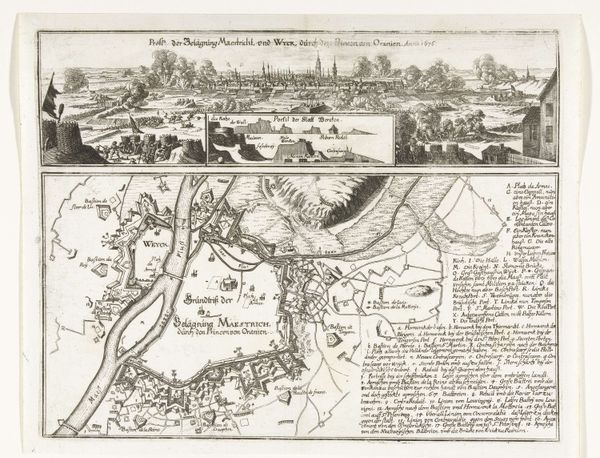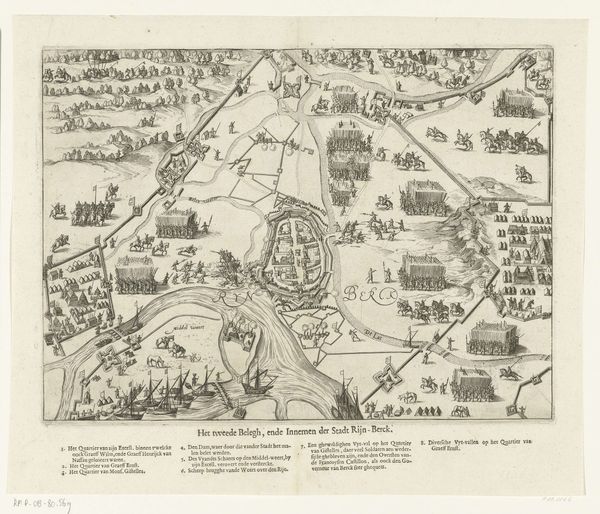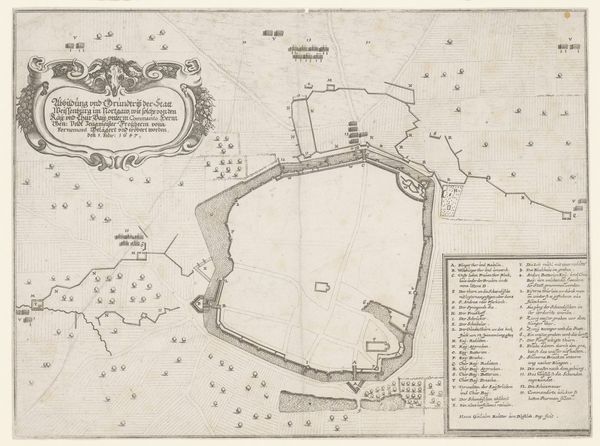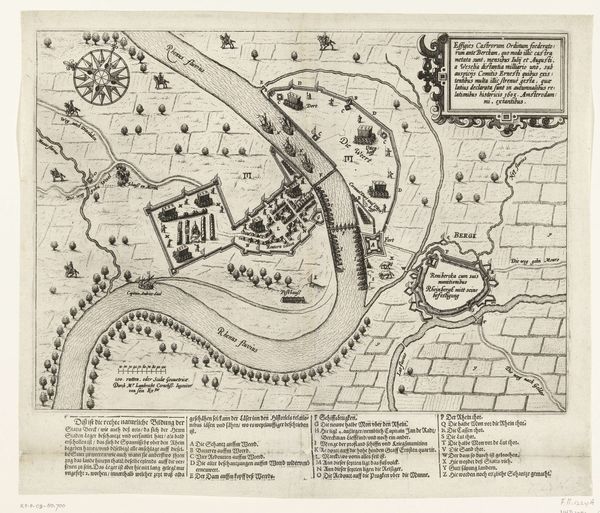
print, metal, engraving
#
baroque
#
dutch-golden-age
# print
#
metal
#
landscape
#
geometric
#
line
#
cityscape
#
history-painting
#
engraving
Dimensions: height 428 mm, width 422 mm
Copyright: Rijks Museum: Open Domain
This 1596 anonymous print at the Rijksmuseum, titled "Siege of Hulst by Archduke Albrecht," illustrates the siege of the city. Dominating the scene is a detailed plan of Hulst, fortified with bastions, surrounded by besieging forces. Note the geometric precision of the fortifications and the ordered arrangement of the besieging army. These forms echo across time. In Renaissance cityscapes and even ancient Roman military camps, we find similar efforts to impose order and control through structured layouts. The bastions, designed to offer defensive angles, remind one of the recurring human need to fortify and protect, a need that surfaces repeatedly in castle designs, city walls, and even modern urban planning. Consider, too, how such a map serves not only as a record but also as a psychological tool. It visually asserts dominance, turning a chaotic conflict into a comprehensible, manageable image. This act of mapping, of imposing structure, can be seen as a way to master the anxiety and uncertainty of war, projecting a sense of control over uncontrollable events. The image reveals our recurring need to understand and control our environment, projecting our psychological needs onto the world.
Comments
No comments
Be the first to comment and join the conversation on the ultimate creative platform.


